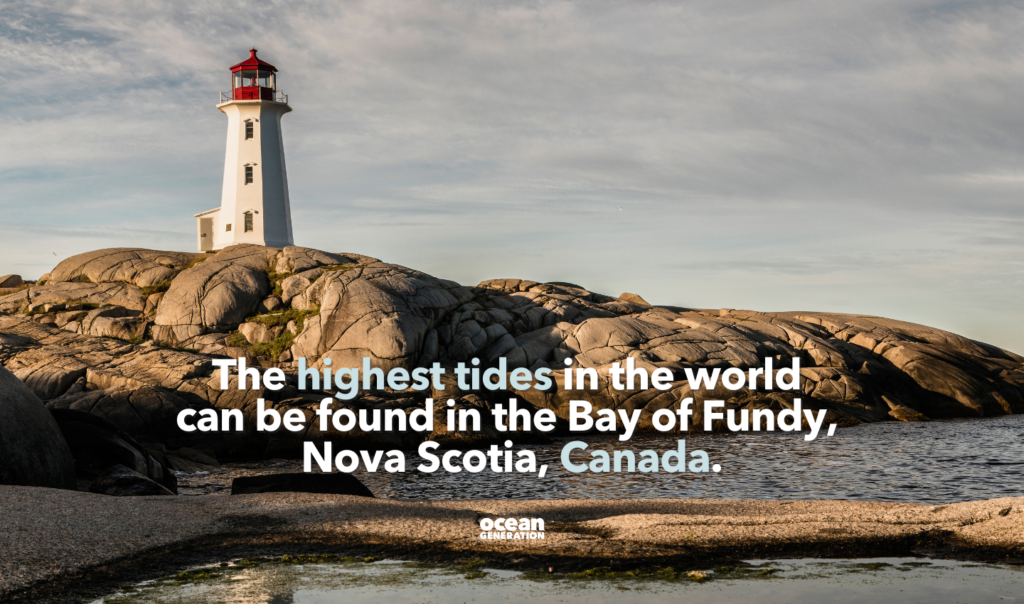- Science: Explained
The motion of the Ocean explained: Waves and tides

The Ocean spends its life in perpetual motion.
From the smallest ripple to the largest storm wave, energy from the Ocean is one of the most powerful forces on our planet. They have carved the shape of our coastlines over thousands of years.
Many of us observe the constant motion of waves and tides, but few of us ever stop to consider how these not-so-simple certainties actually work.
What are Ocean waves, and where do they come from?
First things first, Ocean waves are the transfer of energy across a body of water, not the movement of water itself.
Surface waves are caused by wind out at sea. As the wind blows across the Ocean, particles near the surface are disturbed. Friction and pressure generate ripples, and this wave induced pressure causes each individual water particle to push and pull on its neighbour.
The water molecules begin to move up and down in a circular orbit, creating a wave crest. This motion propagates energy through the water in the direction of the wind.
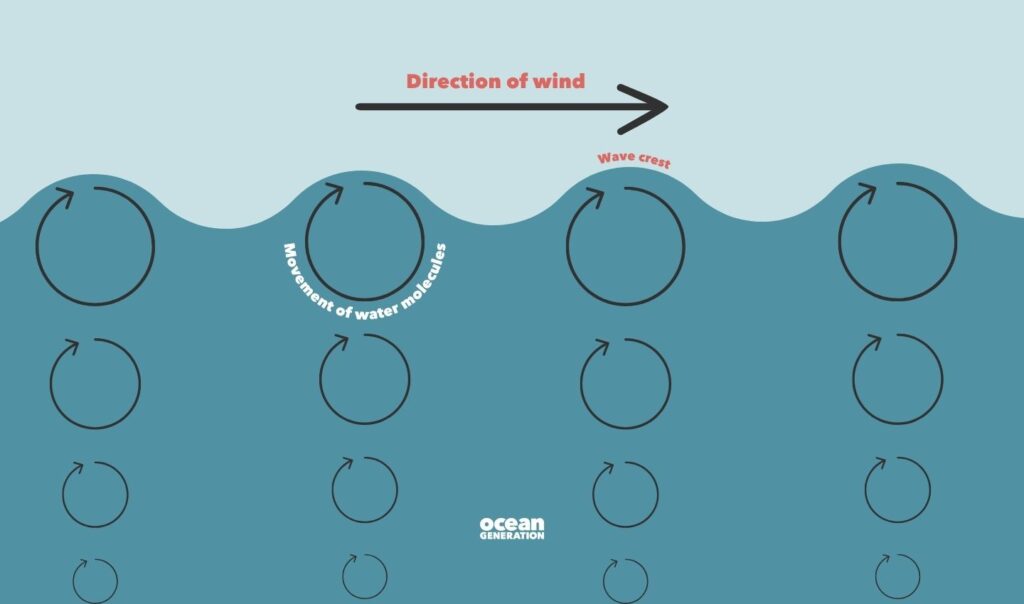
Once they have enough energy from the wind, these wave crests spread out and begin their journey across the open Ocean as “swells”. These swells can travel uninterrupted for thousands of miles, until they reach the shore and meet their dramatic end.
As the wave approaches shallower water, the circular orbits of the water molecules in the lower part of the water column are disrupted by the seafloor and get slowed down by friction.
The water molecules closer to the surface are less effected by friction, so the energy continues to move through them at its original speed.
The wave grows in height but is left unsupported as the lower part is dragged along the seafloor. Eventually, the wave finds itself with nothing underneath it, and collapses in a dramatic fashion, known as the wave “break”.
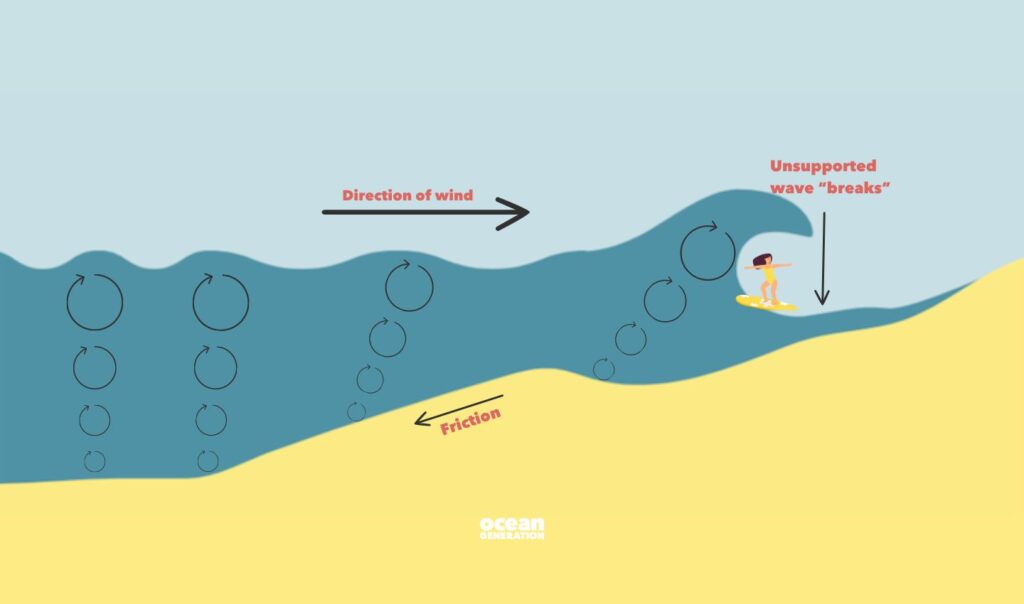
Another form of Ocean waves that move across our planet are tides.
The predictable rise and fall of the Ocean along our shores is as certain as the sun rising in the East and the stars coming out at night.
For centuries, humans have learned to predict the tides for navigation, fishing and other recreational activities.
But to fully understand how tides work, we must look up to space.
The moon and Earth both exert a gravitational force and are constantly accelerating towards each other in orbit.
As our planet accelerates towards the moon, the water on the side closest to the moon accelerates faster than the solid rock in the middle and accumulates to form a slight bulge.
This is known as tidal bulge.
As the Earth rotates, this watery swell stays in the same position relative to the moon. The land rotates into this bulge at high tide, and out of it at low tide.
So, when we stand on the beach and watch the tide going out, what we’re actually observing is the Earth rotating away from the Ocean.
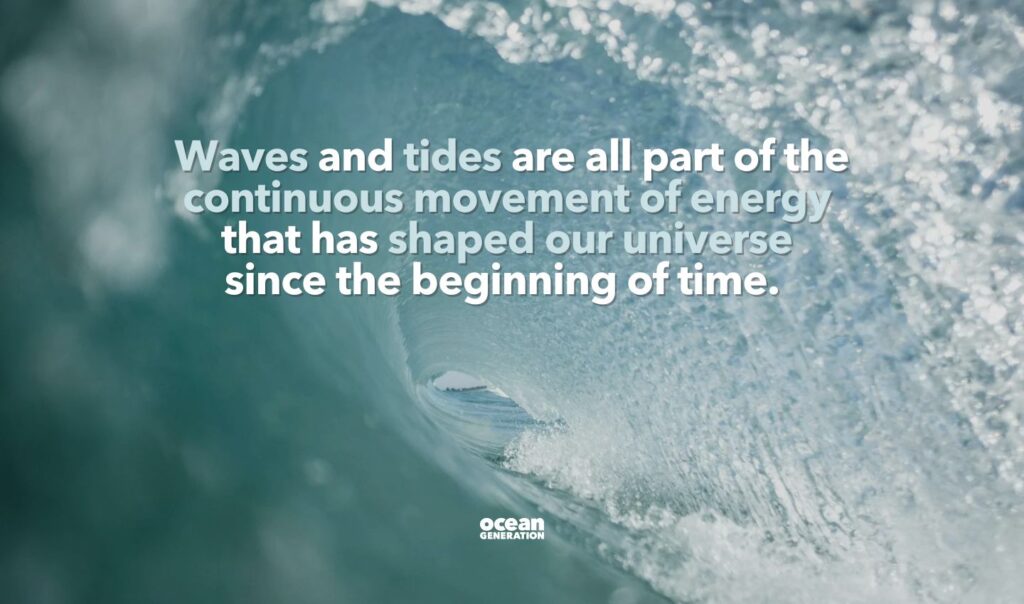
But wait a second, why are there two high tides per day?
This is where things get a bit more complicated. Put your scientist hats on, and imagine the following:
While the water on the near side bulges towards the moon, the water on the far side bulges away from the moon.
Remember that the moon and Earth are constantly accelerating towards each other in orbit.
A centrifugal force (a force which acts on an object that’s rotating) acts as a result of this spinning.
On Earth, this centrifugal force is strongest at locations facing away from the moon, causing the water to bulge away from the moon at the far side.
Earth therefore rotates into two tidal swells each lunar day of 24 hours 50 mins.
What is a lunar day?
A lunar day is the time it takes for a specific point on Earth to rotate from an exact point under the moon to return to the same point under the moon.
This explains why there are two high and two low tides per day, and each high tide occurs 12 hours and 25 minutes apart.
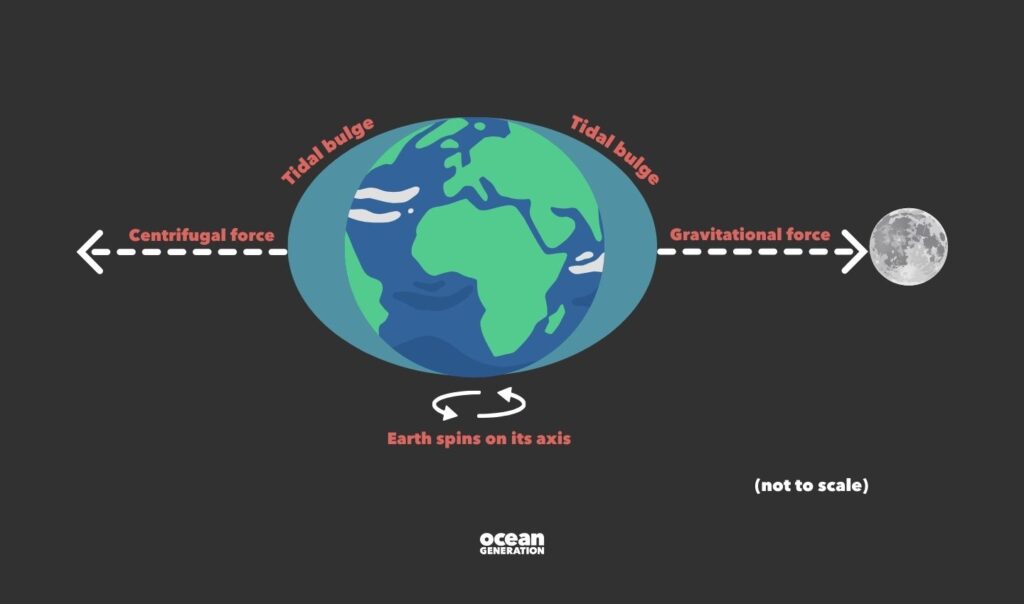
The sun also has a gravitational tidal force on our Ocean: It’s called a solar tide.
However, it’s much smaller since the sun is much further away.
When the sun and the moon are aligned, their lunar and solar forces combine to create a larger tide, known as spring tide.
In contrast, when the sun and moon are at a right angle, their opposing tidal forces partially cancel each other out, creating a smaller tide. This is known as neap tide.
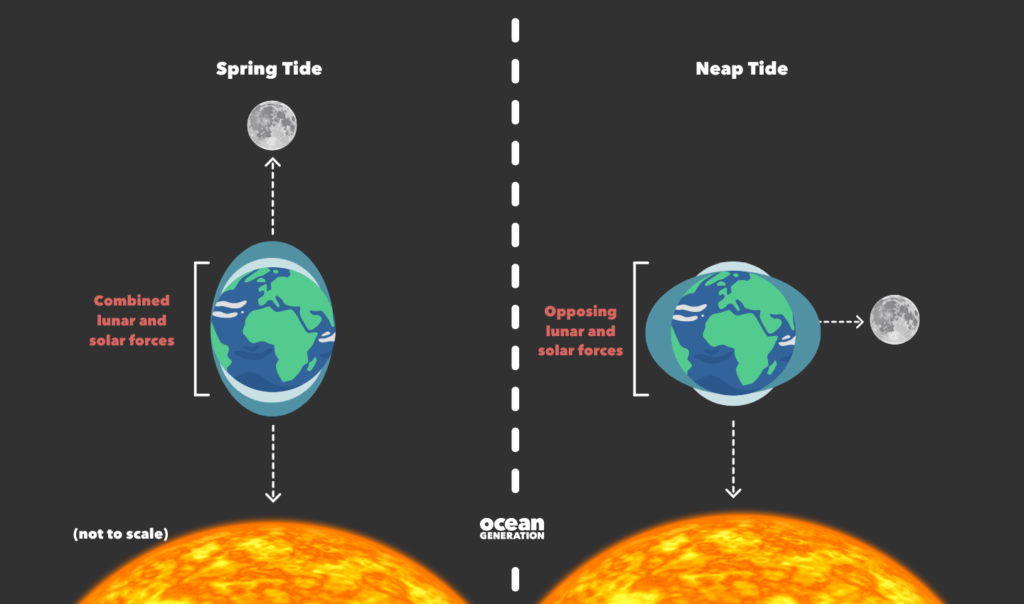
Back on Earth, the shape of the coastline can have a dramatic influence on tidal magnitude.
For example, the highest tides in the world can be found in the Bay of Fundy, Nova Scotia, Canada. The size, depth and unique funnel-shape of this coastline causes a natural oscillation (a back-and-forth movement in regular rhythm) of the water in near-perfect sync with the tide, which has an amplification effect.
So next time you’re taking a stroll along the coast and listening to waves crashing against the shore, take a moment to consider the forces in play to make it all possible.
Waves and tides are all part of the continuous movement of energy that has formed and shaped our universe since the beginning of time.
